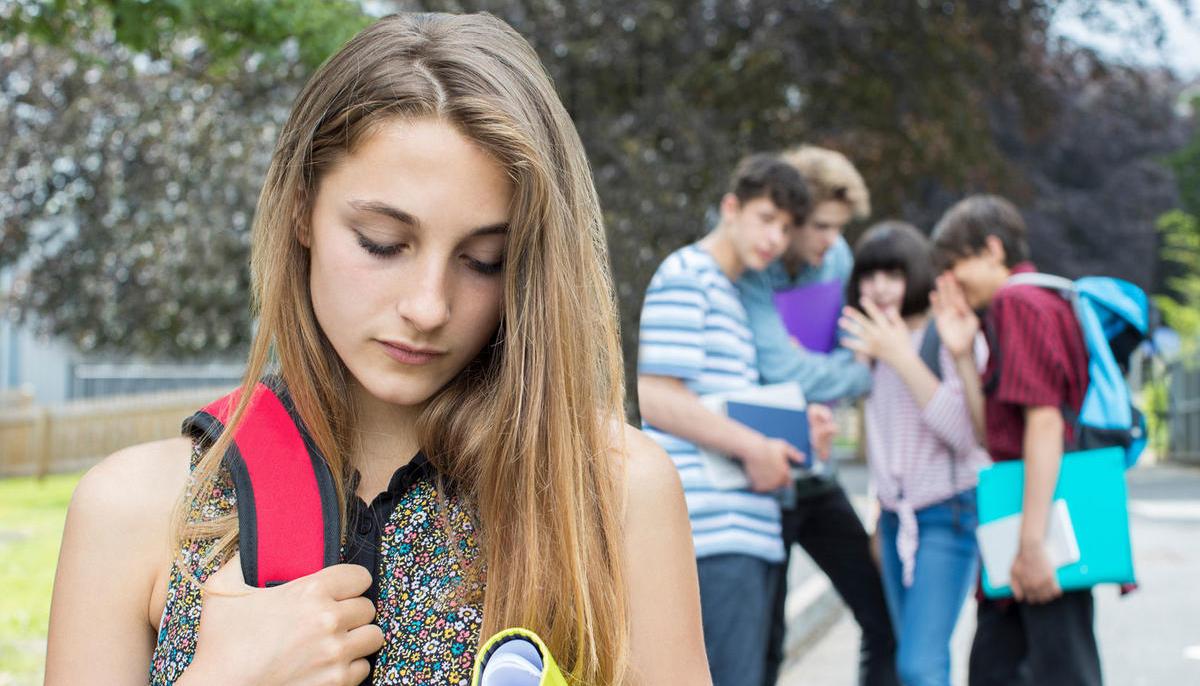A bullied child tends to be absent from school, not to get involved in extracurricular activities or has the desire to give up school as a form of protection against the aggression he has to face there.
Although in the public space there is also talk about bullying at the workplace, for example, in general, children and adolescents are more exposed to these types of aggressive and repetitive behaviors. They are in a period of physical, emotional and mental development. They are in the process of learning how to build social relationships and how to manage emotions, they do not have the tools of adults to defend themselves, which makes them more vulnerable to bullying.
About bullying and its effects
The word bullying comes from the English word bully and can be translated by threatening, harassing, intimidating, scaring, humiliating.
Bullying differs from ordinary conflicts or teasing by its repetitive nature and the intention to harm the targeted person. Bullying is not an isolated incident.
Bullying in childhood can also have repercussions in adulthood. Adults who were bullied as children are more likely to face mental health conditions (depression, anxiety, post-traumatic stress disorder), but also physical ones: cardiovascular diseases, diabetes and obesity. They can also encounter difficulties in social relations and develop risky behaviors (alcohol abuse, prohibited substances, eating disorders).
What is bullying?
Bullying represents aggressive and repetitive behavior, in which a person or a group of people, intentionally, causes suffering and discomfort to another person considered weaker, vulnerable.
Bullying takes various forms, from verbal insults and insults, to physical threats, hits, ignoring and exclusion from the group with the aim of hurting or spreading false rumors about the person in question.
The bullied child usually has problems defending himself and does nothing to "provoke" the aggression.
Bullying or teasing?
Sometimes parents face difficulties in identifying this type of behavior both in situations where their child is the one who has such behavior towards another child, as well as in situations where the bullying is directed against their own child.
Moreover, there are two ideas that often mask the phenomenon of bullying:
- Physical and/or verbal aggression from a colleague as a normal part of children's development "it was like that when we went to school, a colleague would joke about me, he would slap me, but I didn't stay with trauma because of this" .
- Bullying behaviors justified by "they are children, that's how children are, they still fight, they still argue with each other" .
Below you can find the main differences between bullying and a simple game between children:
- The teasing or innocent jokes that children make to other children have a playful character, they are done in play and for fun, spontaneously.
- Instead, bullying has an intentional character and is based on a power imbalance because it involves a person in a position of vulnerability and another or others, perceived by the group/collectivity/victim as "powerful".
- Teasing is mostly verbal, for example a joke about a certain article of clothing. Bullying has many forms, from verbal aggression to physical aggression.
- Teasing does not involve threats and humiliation.
- Teasing tends not to be repetitive, and bullying is repetitive.
- Teasing, unlike bullying, does NOT cause negative physical and psychological effects.
According to statistics, in the United States of America, bullying is a common phenomenon, 1 out of 5 high school students reported being the victim of such aggressive behavior repeatedly.
Types of bullying
Bullying can happen at school, in the classroom, in the hallway, in the school yard, during sports class, in the park or during extracurricular activities and can take many forms:
- Physical bullying - the child is physically assaulted by hitting, pushing, biting, hitting with various objects.
- Verbal bullying – the child is threatened, insulting words are addressed to him, humiliating nicknames are given to him, he is insulted, he is laughed at or untrue rumors are spread to hurt him
- Social bullying - is isolated from the group or excluded from activities with the aim of hurting and humiliating him, is ignored and denigrated.
- Bullying by damaging the property of the person concerned - by stealing or destroying some personal property - satchel, notebooks, clothes, phone.
- Cyberbullying - by means of technology (social networks, messaging platforms, etc.), offensive pictures and videos, false information about the bullied child, threats are spread, the purpose being to scare and humiliate the public.
Cyberbullying
Cyberbullying occurs when someone uses technology (social networks, instant messaging services, e-mail, etc.) to humiliate, cause harm or pain to another person.
With the spread of technology and access to the Internet, cyberbullying has gained momentum.
Studies suggest that in most cases, bullying takes place simultaneously: physically, in school for example, and online.
The effects of cyberbullying are similar to other forms of bullying:
- It increases the risk of depression
- Anxiety
- Sleep problems
- Low school performance
- School dropout
- Behavioral problems in adulthood.
According to the CDC, children who bully other children present a greater risk of ending up in the situation of abusing substances, of facing school problems and violence later, as teenagers or even as adults.
At the same time, there are also cases in which the same child is both bullied (by a classmate for example) and bullied (in the park, in front of another child). Studies indicate that this category is the most exposed to developing mental health disorders and behavioral problems.
The causes of bullying
The child subjected to such behaviors does NOT do anything to "spark" aggression from another child or children.
The child who bullies another child labeled as "weak" can develop this behavior for various reasons:
- The need for control - not only adults, but also children need to feel that they have control over the things that happen in their lives. To achieve this feeling of control they will do what they think will help them, including hurting others. Concretely, from the victim of the aggression, they will obtain a behavior or an attitude through which they feel in control of the situation.
- Parental neglect, lack of attention or supervision from parents - Children who do not receive enough attention from the adults in their lives may be more prone to bullying because they are looking for a way to draw attention to themselves.
- Negative examples and domestic abuse - children exposed to violence are more likely to develop negative behaviors towards others.
- Social validation - some children will bully others because they have observed this behavior in others and copy the behavior as a way to be socially accepted by the bully and/or peers. Other children will support bullying as a form of protection, so that they themselves do not become a target or a victim of aggression.
- The need to feel superior - children who feel insecure about themselves may be more prone to bullying in order to feel stronger, superior.
How do we recognize bullying?
Even if the little one does not communicate about what is happening to him, notice if:
- Changes in behavior - the rapid alternation of states of deep sadness with joy or vice versa, increased irritability, stress, isolation from friends, giving up the activities that previously gave him pleasure.
- Certain physical signs that he tries to justify when asked about their origin - bruises, scratches or wounds.
- Refusal to go to school , invoking reasons of illness to miss classes.
- Changes in the daily routine , for example, he no longer wants to go out to the park to play with his friends.
- Changes in eating or sleeping habits - he seems tired in the morning when he wakes up, falls asleep hard, has no appetite or vice versa, takes refuge in food, faces digestive disorders.
- Avoiding school and other school activities, decreasing school performance.
- Apologies for certain lost items or for which he declares that he does not know where they are - clothes, school items, toys.
- Frequent complaints - complains of headaches, stomachaches.
- Self-criticism - he insistently focuses on mistakes, talks about his flaws, says about himself that he is stupid , useless , a loser .
Is your child a victim of bullying?
The prevention, but also the effective combating of this phenomenon, requires sustained efforts both on the part of the parents, as well as on the part of the school institutions and the community in general.
Many times, the child victim hides from the parents or avoids reporting the situations he is facing to the teachers. The fear of not worsening the situation, the shame, the fear of being labeled as "paracious", weak, makes them keep silent.
First of all, there is a need for the understanding of bullying by the adults involved - family, educators, directors, teachers and other people involved in the educational process.
Secondly, the recognition of bullying situations must be followed by a transient, categorical response from the adult that the related measures are NOT OK .
Last but not least, talk to the child about school, about his activities, about his friends, so you can notice if something has changed in his world. Also, by cultivating the relationship through communication and constant connection with him, you have the chance to create an environment conducive to dialogue, open discussions in which the child can tell the parent what is bothering him.
- Help children understand bullying - talk to children about what bullying means and how it can affect someone, so they will be able to identify these situations.
- Make sure they know what to do if they become victims of bullying - who to contact and what measures can be taken afterwards.
- Do not reproach the child for allowing himself to be a victim - such an attitude will make him close even more in himself. "Why didn't you tell me until now? why didn't you give too? why didn't you go to the management?" does not help in these situations.
- Talk to a specialist - a specialized psychologist or psychotherapist who has the necessary knowledge and skills to help the child overcome these extremely difficult episodes for him. Or contact a specialist yourself to learn how to manage the situation.
Children who feel supported by family, friends and teachers are less likely to be victims of bullying. Family, school community and friends can offer support to children by offering opportunities to engage in positive activities, by promoting tolerance and respect and by prompt intervention in case of any incidents of bullying.







